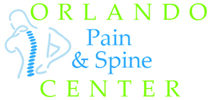What is it?
Disc Regenerative Therapy (DRT) is a new procedure that offers a promising new option for treating chronic discogenic back pain. The procedure triggers the body’s natural healing mechanisms, relieving pain and often curing the cause.
Degenerative disc disease can develop over time as the discs between the vertebrae of the spine become less supple and more susceptible to damage and inflammation. DRT treatment promotes the healing of injured discs through the injection of glucosamine and dextrose solution into the center of the disc. These natural substances stimulate the growth of new collagen fibers and increase the strength of the painful disc.Glucosamine taken by mouth has proven to be effective in relieving osteoarthritis pain in the knee and slowing degeneration. DRT takes a more direct approach by concentrating the solution in the impaired disc, delivering the solution right where it’s needed. By working in tandem with the body’s ability to heal itself, this disc treatment may potentially lead to complete and permanent improvement.
How Long does the Procedure Take?
The procedure takes approximately 30 minutes. Performed in a medical office, DRT relieves pain without the risks of surgery, without general anesthesia or hospital stays, and without a prolonged recovery period. In fact, most people return to their jobs or usual activities right after the procedure.
What are the Expected Results?
Multiple clinical trials have supported the benefits of DRT, and it’s ability to reduce pain and improve activity level. For example, in a pilot study performed by R.G Klein et al., DRT demonstrated significant improvement with low back discogenic pain. It is theorized that the reduction in pain and disability are the result of favorable alterations in the intervertebral disc. While additional research is still being conducted on this therapy, increasingly more pain management specialists around the world are incorporating DRT into treatment plans for patients experiencing chronic discogenic pain. Widespread recognition continues to grow because of the positive results of this cost effective technique. It also has the potential to reduce the need for more costly surgical interventions.
